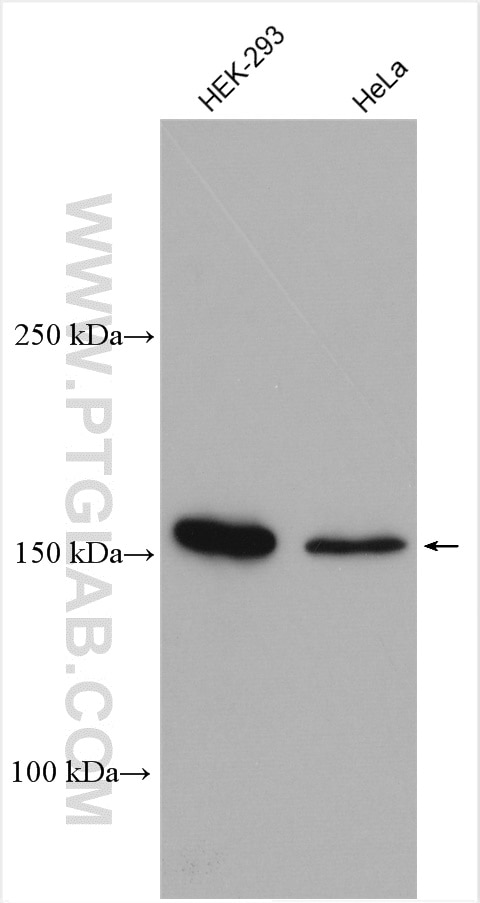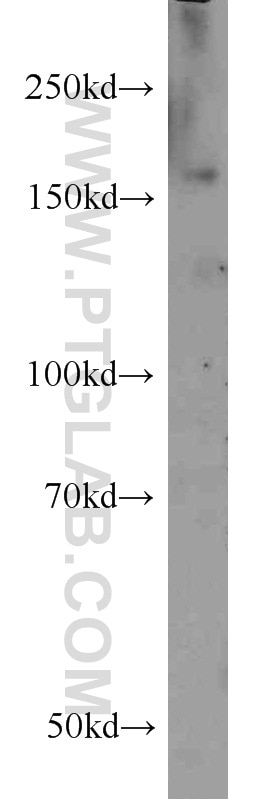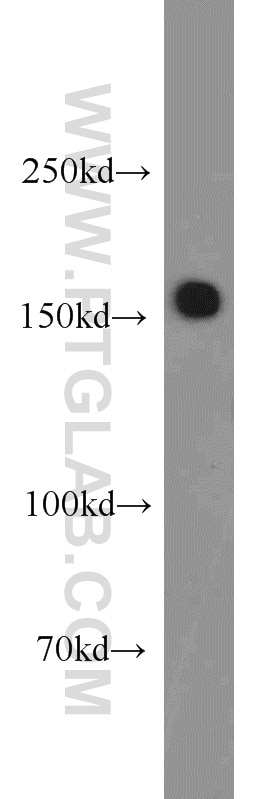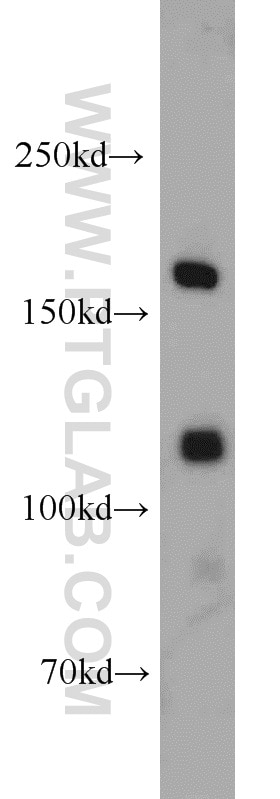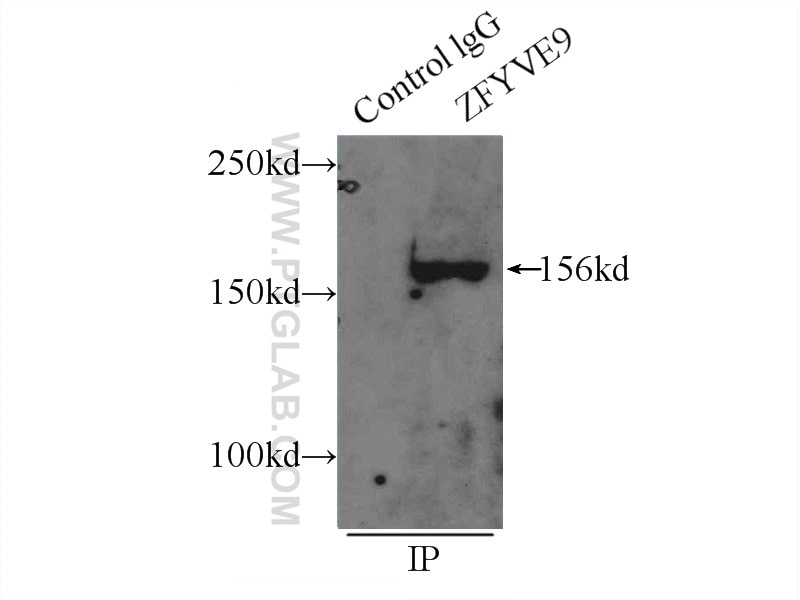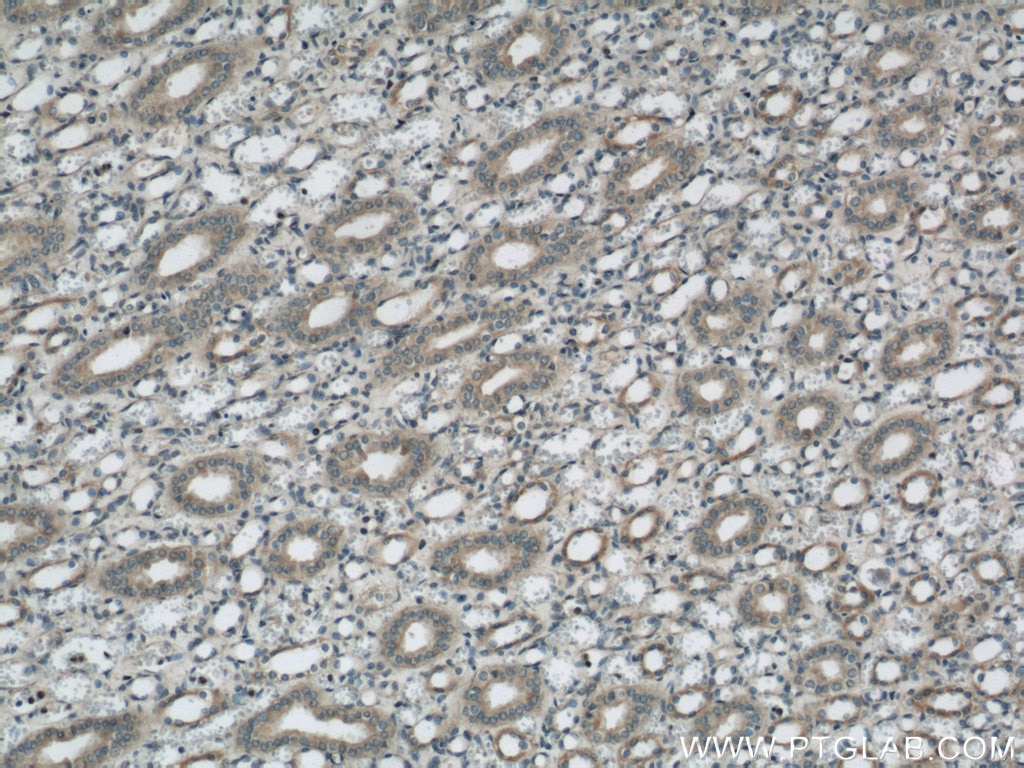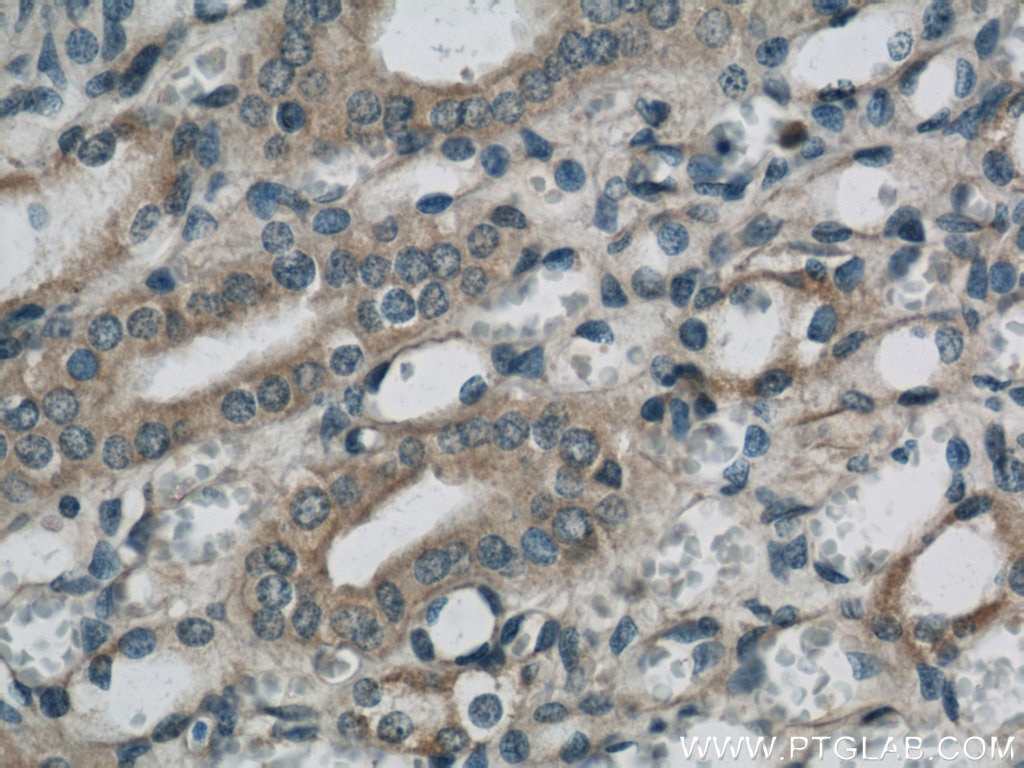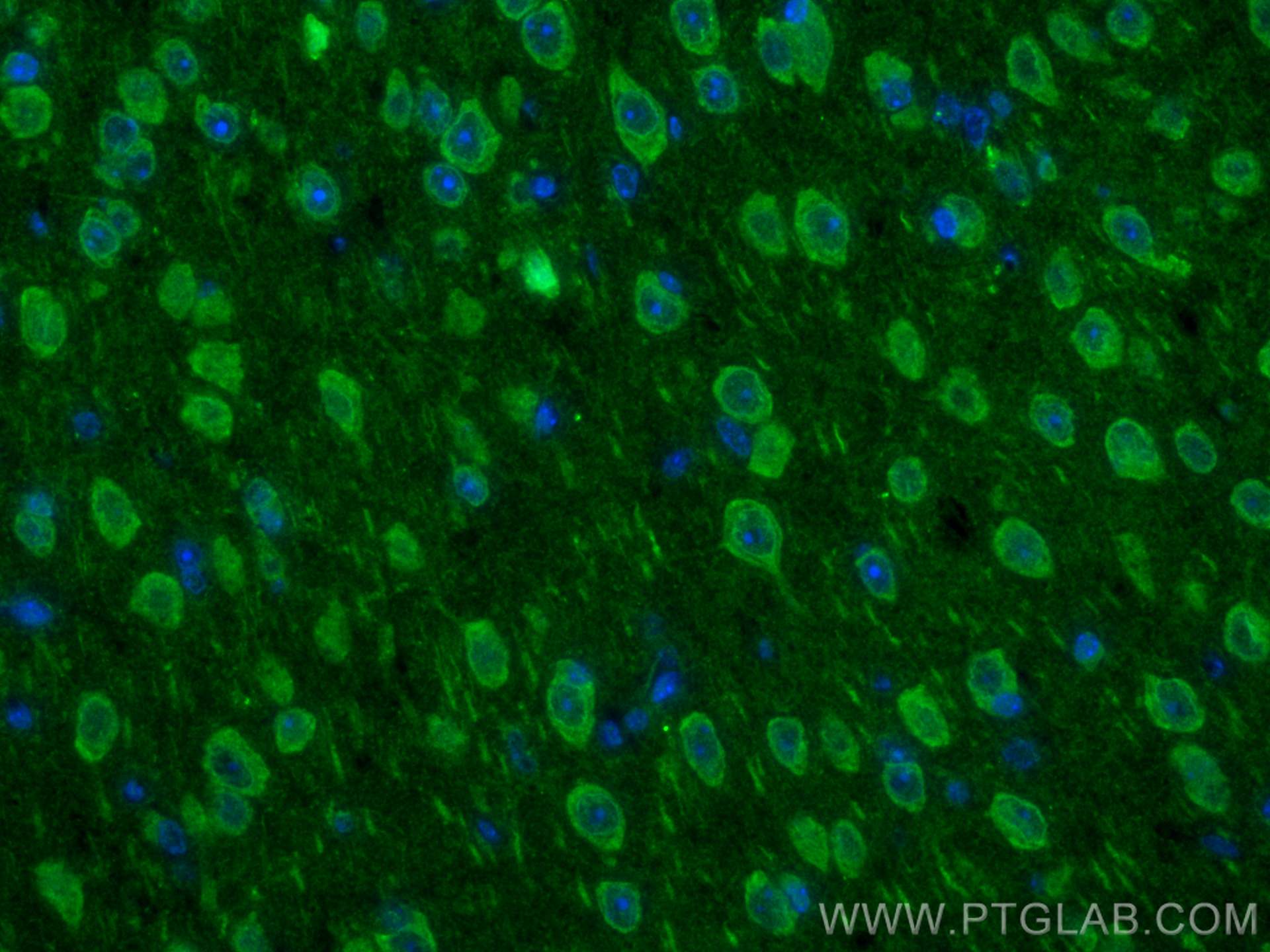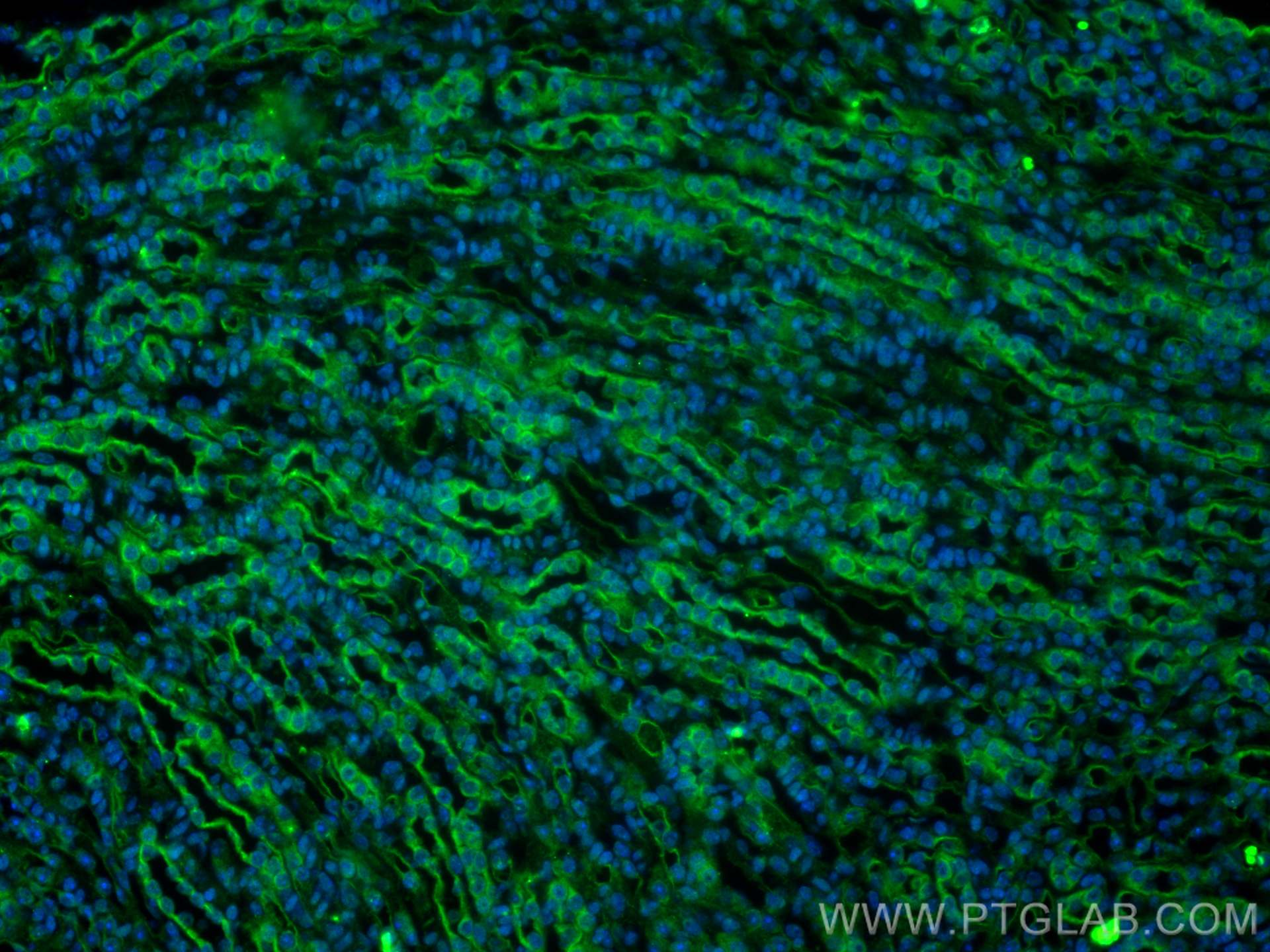- Phare
- Validé par KD/KO
Anticorps Polyclonal de lapin anti-SARA
SARA Polyclonal Antibody for WB, IP, IF, IHC, ELISA
Hôte / Isotype
Lapin / IgG
Réactivité testée
Humain, rat, souris
Applications
WB, IHC, IF-P, IP, ELISA
Conjugaison
Non conjugué
N° de cat : 22033-1-AP
Synonymes
Galerie de données de validation
Applications testées
| Résultats positifs en WB | cellules HEK-293, cellules HeLa, cellules MCF-7, tissu cérébral de souris, tissu cérébral humain |
| Résultats positifs en IP | tissu cérébral de souris |
| Résultats positifs en IHC | tissu rénal humain il est suggéré de démasquer l'antigène avec un tampon de TE buffer pH 9.0; (*) À défaut, 'le démasquage de l'antigène peut être 'effectué avec un tampon citrate pH 6,0. |
| Résultats positifs en IF-P | tissu cérébral de souris, tissu rénal de souris |
Dilution recommandée
| Application | Dilution |
|---|---|
| Western Blot (WB) | WB : 1:500-1:2000 |
| Immunoprécipitation (IP) | IP : 0.5-4.0 ug for 1.0-3.0 mg of total protein lysate |
| Immunohistochimie (IHC) | IHC : 1:20-1:200 |
| Immunofluorescence (IF)-P | IF-P : 1:50-1:500 |
| It is recommended that this reagent should be titrated in each testing system to obtain optimal results. | |
| Sample-dependent, check data in validation data gallery | |
Applications publiées
| KD/KO | See 2 publications below |
| WB | See 3 publications below |
| IF | See 2 publications below |
Informations sur le produit
22033-1-AP cible SARA dans les applications de WB, IHC, IF-P, IP, ELISA et montre une réactivité avec des échantillons Humain, rat, souris
| Réactivité | Humain, rat, souris |
| Réactivité citée | Humain, souris |
| Hôte / Isotype | Lapin / IgG |
| Clonalité | Polyclonal |
| Type | Anticorps |
| Immunogène | SARA Protéine recombinante Ag16929 |
| Nom complet | zinc finger, FYVE domain containing 9 |
| Masse moléculaire calculée | 1425 aa, 156 kDa |
| Poids moléculaire observé | 156 kDa |
| Numéro d’acquisition GenBank | BC032680 |
| Symbole du gène | SARA |
| Identification du gène (NCBI) | 9372 |
| Conjugaison | Non conjugué |
| Forme | Liquide |
| Méthode de purification | Purification par affinité contre l'antigène |
| Tampon de stockage | PBS avec azoture de sodium à 0,02 % et glycérol à 50 % pH 7,3 |
| Conditions de stockage | Stocker à -20°C. Stable pendant un an après l'expédition. L'aliquotage n'est pas nécessaire pour le stockage à -20oC Les 20ul contiennent 0,1% de BSA. |
Informations générales
ZFYVE9, also known as SARA (Smad anchor for receptor activation), is a double zinc finger (FYVE domain) protein that interacts directly with SMAD2 and SMAD3, and is involved in Alzheimer's disease. SARA functions to recruit SMAD2/SMAD3 to intracellular membranes and to the TGF-beta receptor. SARA plays a significant role in TGF-mediated signaling by regulating the subcellular location of SMAD2 and SMAD3 and modulating the transcriptional activity of the SMAD3/SMAD4 complex. SARA is possibly associated with TGF-beta receptor internalization.
Protocole
| Product Specific Protocols | |
|---|---|
| WB protocol for SARA antibody 22033-1-AP | Download protocol |
| IHC protocol for SARA antibody 22033-1-AP | Download protocol |
| IF protocol for SARA antibody 22033-1-AP | Download protocol |
| IP protocol for SARA antibody 22033-1-AP | Download protocol |
| Standard Protocols | |
|---|---|
| Click here to view our Standard Protocols |
Publications
| Species | Application | Title |
|---|---|---|
Structure Structural Basis for Specific Interaction of TGFβ Signaling Regulators SARA/Endofin with HD-PTP.
| ||
J Bone Miner Res Dysfunction of Caveolae-mediated Endocytic TβRI Degradation Results in Hypersensitivity of TGF-β/Smad Signaling in Osteogenesis Imperfecta | ||
Sci Adv Neuropilin 1 is an entry receptor for KSHV infection of mesenchymal stem cell through TGFBR1/2-mediated macropinocytosis
|
